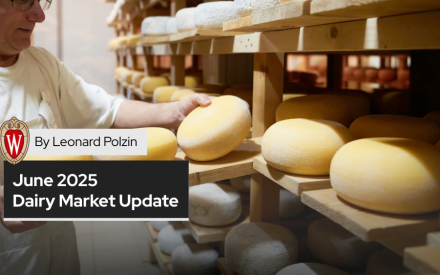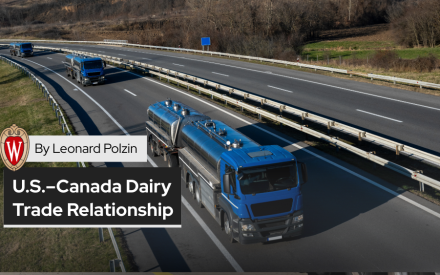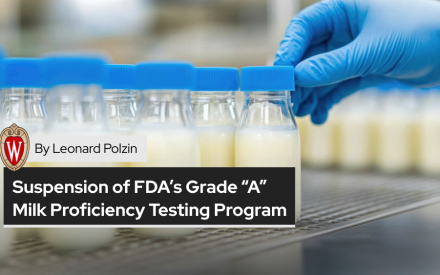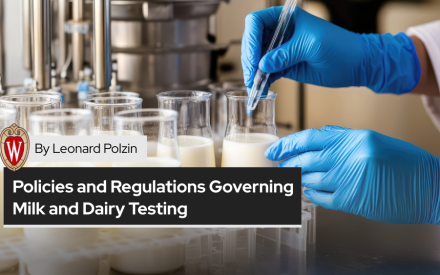Table of Contents
- Introduction
- Background and Evolution
- Key Elements of the “Farm to Fork” Strategy
- Objectives and Vision
- Key Components
- Concerns and Challenges
- Implementation Strategies
- Challenges and Criticisms
- Potential Impacts
- Updates and Progress as of August 2024
- Implications for Dairy Farmers
- Conclusion
- References

The ‘European Green Deal’ (EGD) is a comprehensive and some say ambitious policy initiative launched by the European Commission in December 2019, under the leadership of Ursula von der Leyen, president of the European Commission. Its overarching goal is to make Europe the first climate-neutral continent by 2050, promoting a sustainable and inclusive economy. From EGD document the official communication of the European Green Deal, which outlines the EU’s roadmap and key measures to achieve these ambitious goals (European Commission) (European Environment Agency’s home page) (EUR-Lex) (EUR-Lex):
“The European Green Deal resets the Commission’s commitment to tackling climate and environmental-related challenges that is this generation’s defining task.”
- “The European Green Deal is a new growth strategy that aims to transform the EU into a fair and prosperous society, with a modern, resource-efficient and competitive economy where there are no net emissions of greenhouse gases in 2050 and where economic growth is decoupled from resource use.”
- “It also aims to protect, conserve and enhance the EU’s natural capital, and protect the health and well-being of citizens from environment-related risks and impacts.”
- “The Green Deal will make consistent use of all policy levers: regulation and standardization, investment and innovation, national reforms, dialogue with social partners, and international cooperation.”
- “The Commission will launch a European Climate Pact to give citizens and stakeholders a voice and role in designing new climate actions, sharing information, launching grassroots activities and showcasing solutions that others can follow.”
This paper provides an overview of the policies, analysis, and perspectives on the European Green Deal (EGD), emphasizing its objectives, implementation strategies, challenges, and potential impacts, with a primary focus on agriculture and the dairy industry.
Background and Evolution of the European Green Deal
The European Economic Community (EEC) was established in January 1958 by Belgium, France, Italy, Luxembourg, the Netherlands, and West Germany. In 1963, the EEC implemented the Common Agricultural Policy (CAP) to support farmers, improve productivity, ensure food stability, safeguard incomes, tackle climate change, manage resources, maintain rural areas, and promote rural jobs.
CAP funding came from the EEC’s common budget with tariff preferences for member goods. Income support ensured parity with other sectors and tried to boost food security. The EEC became the European Union (EU) in 1993, now with 27 members. The UK left the EU in 2020. By 2021, the EU had an $80 billion agricultural trade surplus. To reduce CAP costs, dairy production quotas were imposed in 1984. The 1992 McSharry reforms shifted from price support to direct payments, aligned intervention prices with world markets, and required area set-asides. In 2003, direct payments were decoupled from production and price levels, redirecting some funds to conservation. In 2007, the EU established two CAP funding pillars: Pillar 1 for agricultural support and Pillar 2 for rural development and environmental activities. The 2013 reforms linked direct payments to environmental practices. The 2017 reforms, effective in 2021 as the European Green Deal, emphasized environmental goals, support for small and medium-sized farms, young farmers, and gender balance in agriculture. The EU also set biofuel targets, increasing from 5.75% in 2010 to 10% in 2009, excluding edible feedstock-based biofuels. Germany considered phasing out crop-based biofuels by 2030.
It has been suggested that the European Green Deal represents the EU’s commitment to addressing climate change and environmental degradation while promoting economic growth and social equity. A key component of the Green Deal is the ‘Farm to Fork’ strategy, introduced by the European Commission in December 2019, which specifically targets the agricultural and food sectors. This strategy is a comprehensive approach aimed at transforming the EU’s agricultural and food systems, involving ambitious targets and policy shifts to support the EU’s climate-neutrality goal by 2050. However, the implementation of these proposed environmental regulations has raised concerns within the agricultural community. Many farmers argue that these regulations increase their operational costs and impose burdensome restrictions, potentially jeopardizing their competitiveness in international markets. This was particularly pressing in the early part of 2024 when agricultural commodity prices were already low, and farmers’ incomes strained. The protests by farmers across Europe are a manifestation of these concerns. Farmers argued that the increased costs and regulatory burdens could threaten their livelihoods, especially without sufficient compensation or support mechanisms to facilitate the transition to more sustainable practices.
Key demonstrations took place in Germany, Poland, and other EU countries.
- Germany: Protests began in December 2023 and escalated into early 2024, with farmers opposing cuts to diesel subsidies and stringent environmental regulations. These protests involved blocking highways and city centers with tractors, causing significant disruptions.
- Poland: In February 2024, Polish farmers, joined by beekeepers, truckers, and foresters, began widespread protests. These were driven by opposition to the European Green Deal, particularly its impact on their livelihoods, and concerns about the importation of Ukrainian grain, which they argued was undermining their income.
- Other Countries: In March 2024, protests occurred in France and Spain, where farmers blocked borders and disrupted transport routes to push back against the EU’s climate-related regulations.
These protests have resulted in some concessions from the European Commission, including loosening certain environmental measures and providing more flexibility in compliance for farmers.
The tension between environmental objectives and agricultural viability highlights the challenge of balancing immediate economic interests with long-term sustainability goals. The “Farm to Fork” strategy highlights the complex challenge of balancing immediate economic interests with long-term sustainability goals. The EU aims to achieve a green transition in agriculture, but it must also ensure that farmers are supported and can maintain their economic viability during this transition. This includes finding ways to offset the increased costs and ensuring that farmers have access to the necessary resources and technologies to adapt to new practices.
Key Elements of the “Farm to Fork” Strategy
- Sustainable Food Production: The strategy seeks to reduce the environmental and climate footprint of the EU food system, aiming for climate neutrality by 2050. It includes targets for reducing the use of chemical pesticides, fertilizers, and antibiotics.
- Food Security: Ensuring a sustainable food supply for EU citizens, the strategy promotes local and seasonal food, reduces food waste, and supports organic farming.
- Healthy Diets: Encouraging healthier and more sustainable eating habits, the strategy aims to reduce the incidence of diet-related diseases and improve public health.
- Biodiversity: The strategy emphasizes the preservation of biodiversity, aiming to reverse the decline of pollinators and protect natural resources.
Objectives and Vision of the European Green Deal
- Climate Neutrality and Emissions Reduction: The primary objective of the EGD is to achieve climate neutrality by 2050, with an interim target of reducing greenhouse gas (GHG) emissions by at least 55% by 2030 compared to 1990 levels (European Commission, 2019). Studies by Rogelj et al. (2021) have been used as a reference on the scientific necessity of such targets to limit global warming to 1.5°C above pre-industrial levels. The European Climate Law, adopted in June 2021, legally enshrines these targets (European Union, 2021).
- Circular Economy and Resource Efficiency: The EGD promotes a circular economy that prioritizes resource efficiency and waste reduction. According to Kirchherr et al. (2017), transitioning to a circular economy could significantly reduce environmental impacts and enhance economic resilience. Specific measures include sustainable product design, improved recycling, and reduced reliance on virgin materials (European Commission, 2020)
- Biodiversity and Ecosystem Protection: Another key objective is the protection and restoration of biodiversity and ecosystems. The EU Biodiversity Strategy for 2030, an integral part of the EGD, aims to increase protected areas, restore degraded ecosystems, and enhance biodiversity-friendly agricultural practices (European Commission, 2020). Research by Díaz et al. (2019) underscores the critical role of biodiversity in maintaining ecosystem services and resilience.
- Food Security and Nutrition: The strategy aims to ensure that everyone has access to sufficient, safe, nutritious, and sustainable food. This includes addressing issues related to food safety, food waste, and nutrition.
- Economic Viability: The strategy aims to preserve the affordability of food while ensuring fair economic returns for farmers and promoting the competitiveness of the EU’s food supply sector. This includes fostering fair trade practices.
Key Components of the European Green Deal
- Reduction in Pesticides and Fertilizers: The strategy includes targets to reduce the use of chemical pesticides by 50% and the use of fertilizers by at least 20% by 2030. This is intended to reduce the negative environmental and health impacts associated with these chemicals.
- Promotion of Organic Farming: The strategy sets a target for 25% of the EU’s agricultural land to be farmed organically by 2030, promoting practices that are generally considered more sustainable and environmentally friendly.
- Sustainable Food Production: This involves encouraging more efficient energy and water use in agriculture, promoting precision farming techniques, and supporting technological innovations that contribute to sustainability.
- Supply Chain Transformation: The strategy also aims to make food supply chains more sustainable, reducing food waste and loss, and ensuring that sustainability standards are maintained from production to consumption.
- Support for Farmers: Financial and policy support is provided to farmers to help them transition to more sustainable practices. This includes training, access to technology, and financial incentives.
Concerns and Challenges of the European Green Deal
- Operational Costs: The strategy includes a range of legislative and non-legislative measures to achieve its goals, involving revisions to existing laws and the introduction of new regulations. Farmers express concerns that the new regulations will increase their operational costs, making farming less profitable. The costs associated with transitioning to more sustainable practices, purchasing environmentally friendly inputs, and complying with stricter regulations are significant.
- International Competitiveness: There is apprehension that the new regulations could disadvantage EU farmers compared to their counterparts in regions with less stringent environmental standards. This could lead to a loss of market share in international markets.
- Low Commodity Prices: It is not uncommon for the agricultural sector in the EU to grapple with low commodity prices. Additional costs and restrictions could further strain farmers’ incomes, making it difficult for them to sustain their operations.
- Protests and Opposition: The ambitious targets and the rapid pace of implementation have led to significant pushback from farmers in various EU countries. Farmers have raised concerns about the economic viability of the proposed changes, the impact on their livelihoods, and the practicality of meeting the targets. These concerns have led to widespread protests by farmers across Europe. They argue that without adequate support mechanisms, such as financial compensation or assistance in adopting sustainable practices, their livelihoods are at risk. The European Green Deal, aimed at cutting greenhouse gas emissions by 55% by 2030, has brought in strict environmental rules affecting agriculture, leading to widespread protests by farmers across Europe due to lower incomes and tighter regulations. The dairy industry is particularly hit, with a broader trend of decreasing output. Despite government awareness of farmers’ frustrations, effective solutions are unclear. With environmental restrictions tightening, especially noted in Ireland’s significant milk production drop, the dairy sector’s future looks challenging.
- Balancing Economic and Environmental Goals: The European Commission faces the challenge of balancing environmental goals with economic and social considerations. Ensuring that the transition to sustainable practices does not disproportionately affect smaller farmers or lead to increased food prices is a key concern.
Implementation Strategies for the European Green Deal
- Policy Integration and Legislative Frameworks: The EGD encompasses a wide array of policy measures and legislative frameworks to achieve its objectives. It calls for integrating climate and environmental considerations into all EU policies, ensuring a cohesive and coordinated approach (Dupont et al., 2020). The Green Deal will make consistent use of all policy levers: regulation and standardization, investment and innovation, national reforms, dialogue with social partners, and international cooperation (European Commission, 2019).
- Financial Instruments and Investments: Massive financial investments are required to implement the EGD. The European Commission (2020) estimates that achieving the 2030 targets will necessitate additional investments of €260 billion per year. Key financial instruments include the Just Transition Mechanism, which aims to support regions and sectors most affected by the green transition, and the Sustainable Europe Investment Plan, designed to mobilize public and private investments (European Commission, 2019).
- Research, Innovation, and Digitalization: Innovation and digital technologies are pivotal for the EGD’s success. The Horizon Europe program and the Digital Europe program provide funding for research and innovation in areas such as clean energy, smart grids, and digital solutions for environmental monitoring (European Commission, 2020). Geels et al. (2018) emphasize the importance of technological innovation and socio-technical transitions in achieving sustainability goals.
Challenges and Criticisms of the European Green Deal
- Economic and Social Impacts: The transition to a green economy poses significant economic and social challenges. Critics argue that stringent environmental regulations may adversely affect economic growth and competitiveness, particularly in energy-intensive industries (Sapir, 2020). Moreover, the distributional impacts of the EGD are a concern, as vulnerable populations may bear disproportionate costs. The Just Transition Mechanism aims to address these inequalities, but its effectiveness remains debated (McCauley & Heffron, 2018).
- Political and Institutional Barriers: Political and institutional barriers also pose challenges to the EGD’s implementation. The diverse economic structures and energy mixes of EU member states result in varying levels of commitment and capacity to implement EGD measures (Dupont et al., 2020). Furthermore, the EGD’s ambitious targets require unprecedented levels of coordination and cooperation across multiple governance levels and sectors.
- Technological and Infrastructural Constraints: Achieving the EGD’s objectives necessitates substantial technological and infrastructural changes. The transition to renewable energy sources, for example, requires significant investments in grid infrastructure, energy storage, and smart technologies (Geels et al., 2018). Additionally, the development and deployment of new technologies must keep pace with the EGD’s ambitious timelines.
Potential Impacts of the European Green Deal
- Environmental Benefits: If successfully implemented, the EGD could yield significant environmental benefits. Reduced GHG emissions, improved air and water quality, and enhanced biodiversity conservation are among the anticipated outcomes (Rogelj et al., 2021). The shift to a circular economy could also alleviate resource depletion and reduce environmental degradation (Kirchherr et al., 2017).
- Economic Opportunities: The EGD presents numerous economic opportunities, particularly in green industries and technologies. The transition to a sustainable economy could stimulate innovation, create jobs, and enhance the EU’s global competitiveness (European Commission, 2020). Moreover, the EGD’s focus on resource efficiency and circularity could lead to cost savings and increased economic resilience (Dupont et al., 2020).
- Social and Health Benefits: The EGD aims to deliver social and health benefits by addressing environmental inequalities and promoting inclusive growth. Improved air quality, reduced exposure to hazardous substances, and enhanced public spaces are expected to contribute to better health outcomes (Díaz et al., 2019). Additionally, the Just Transition Mechanism seeks to ensure that the benefits of the green transition are equitably distributed, mitigating social disparities (McCauley & Heffron, 2018).
Updates and Progress As Of August 2024
As of August 2024, the European Green Deal continues to serve as a cornerstone of the EU’s strategy to combat climate change and environmental degradation, with the overarching goal of making Europe the first climate-neutral continent by 2050. Some progress has been achieved through the adoption of legislative measures, particularly under the “Fit for 55” package, introduced on July 14, 2021. This package targets a 55% reduction in greenhouse gas emissions by 2030 compared to 1990 levels and includes revisions to existing laws and new initiatives in areas such as emissions trading, renewable energy, and energy efficiency.
However, the implementation of the Green Deal has encountered challenges. Political opposition has intensified, especially following the European Parliament elections in June 2024, where right-leaning and conservative parties gained considerable influence. This political shift has raised concerns about the future of some of the more ambitious elements of the Green Deal, although the framework remains largely intact.
The European Commission remains committed to advancing the Green Deal, introducing initiatives such as the Net-Zero Industry Act and the Strategic Technologies for Europe Platform (STEP) to bolster the EU’s competitiveness in clean technologies. Despite these efforts, experts have expressed concerns about the pace of progress, particularly in sustainable agriculture and energy reforms. While advancements have been made, many believe that more decisive action is needed to meet the Green Deal’s long-term goals.
Implications for Agriculture and Dairy Farming
The Green Deal has far-reaching implications for the agricultural sector, with dairy farming being a significant focus due to its environmental impact. The Deal sets stringent sustainability targets, including reducing greenhouse gas emissions, cutting pesticide use by 50%, and converting 25% of EU farmland to organic farming by 2030. Dairy farming, a major source of methane emissions, is particularly affected by these goals.
A central component of the Green Deal, the “Farm to Fork” strategy, aims to make food systems more sustainable. This strategy includes promoting sustainable dairy production practices, reducing the carbon footprint of dairy farms, and improving animal welfare standards. Dairy farmers are encouraged to adopt practices such as improving feed efficiency, better manure management, and using renewable energy sources on farms.
Financial support has been proposed to help farmers transition to these sustainable practices, but the implementation of these measures has met with resistance. Many farmers, including those in the dairy sector, are concerned about the costs and potential reductions in productivity associated with the new regulations. There is also apprehension about the impact of these policies on the competitiveness of EU dairy products in global markets.
The dairy industry has been actively engaging with EU policymakers to ensure that the transition to sustainable practices does not compromise the economic viability of dairy farms. Industry groups have advocated for balanced approaches that consider the financial and operational realities of dairy farming while still striving to meet environmental goals.
As of the time of this writing, progress in the dairy sector has been mixed. While there has been movement towards more sustainable practices, there are concerns about the speed of implementation and the potential economic impact on farmers. Upcoming discussions in the European Parliament and among EU member states are expected to significantly influence the future direction of these policies, particularly in relation to the dairy industry.
While the European Green Deal has set the stage for substantial environmental and climate-related reforms, the agricultural sector, including dairy farming, remains a critical area where further progress and careful balancing of environmental and economic goals are required.
Conclusion
The European Green Deal represents a bold and comprehensive strategy to achieve climate neutrality, promote sustainability, and foster inclusive growth. While it faces significant challenges, including economic, social, political, and technological barriers, its successful implementation could yield substantial environmental, economic, and social benefits. Ongoing research and policy analyses are crucial to address these challenges, refine implementation strategies, and maximize the EGD’s potential impacts.
References
- Díaz, S., Settele, J., Brondizio, E. S., Ngo, H. T., Guèze, M., Agard, J., … & Zayas, C. N. (2019). Pervasive human-driven decline of life on Earth points to the need for transformative change. Science, 366(6471), eaax3100.
- Dupont, C., Oberthür, S., & von Homeyer, I. (2020). The Covid-19 crisis: A critical juncture for EU climate policy development?. Journal of European Integration, 42(8), 1095-1110.
- European Commission. (2019). The European Green Deal. Communication from the Commission to the European Parliament, the European Council, the Council, the European Economic and Social Committee, and the Committee of the Regions. COM(2019) 640 final. Brussels, 11 December 2019.
- European Commission. (2020). A new Circular Economy Action Plan for a cleaner and more competitive Europe. COM(2020) 98 final. Brussels, 11 March 2020.
- European Union. (2021). European Climate Law. Regulation (EU) 2021/1119 of the European Parliament and of the Council of 30 June 2021.
- Geels, F. W., Sovacool, B. K., Schwanen, T., & Sorrell, S. (2018). The socio-technical transitions perspective and energy policy. Energy Research & Social Science, 41, 215-223.
- Kirchherr, J., Reike, D., & Hekkert, M. (2017). Conceptualizing the circular economy: An analysis of 114 definitions. Resources, Conservation and Recycling, 127, 221-232.
- McCauley, D., & Heffron, R. (2018). Just transition: Integrating climate, energy and environmental justice. Energy Policy, 119, 1-7.
- Rogelj, J., Forster, P. M., Kriegler, E., Smith, C. J., & Séférian, R. (2021). Estimating and tracking the remaining carbon budget for stringent climate targets. Nature, 571(7765), 335-342.
- Sapir, A. (2020). Why has COVID-19 hit different European Union economies so differently?. Bruegel Policy Contribution, (2020/18), 1-13.


 Dairy Market Dynamics and Domestic Constraints: A Dairy Sector Assessment as of June 2025
Dairy Market Dynamics and Domestic Constraints: A Dairy Sector Assessment as of June 2025 U.S.–Canada Dairy Trade Relationship (2025–Present)
U.S.–Canada Dairy Trade Relationship (2025–Present) Suspension of FDA’s Grade “A” Milk Proficiency Testing Program – A Comprehensive Analysis
Suspension of FDA’s Grade “A” Milk Proficiency Testing Program – A Comprehensive Analysis Policies and Regulations Governing Milk and Dairy Testing: A Wisconsin Overview
Policies and Regulations Governing Milk and Dairy Testing: A Wisconsin Overview


